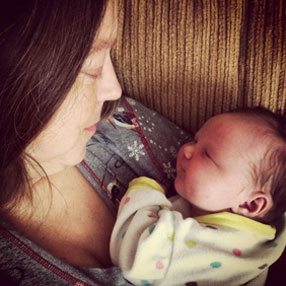Search Results for: "pregnancy successful"
May 25, 2008 · No Comments
At A Personal Choice, we want to maximize the chances for pregnancy after tubal ligation reversal for all of our patients. One step that is helpful in planning for a tubal reversal procedure is examining the pathology report from a patient’s medical record. When a tubal ligation and resection procedure has been performed, a segment of fallopian tube was removed and most likely sent to a pathologist. Therefore, a pathology report should exist in the patient’s medical record. A pathology report will help our tubal reversal doctors determine exactly what was done during a ligation and resection procedure and what your chances of tubal reversal success will be.
Read More
May 23, 2008 · No Comments
“I had 5 pregnancies since my tubal reversal. The 5th pregnancy was successful.” Rhonda P.
Read More
May 21, 2008 · No Comments
As my training as a Tubal Reversal Specialist continues, I would like to share the story of one of our recent patients. Her infertility specialist recommended Dr. Berger as the tubal reversal expert who could give her the best tubal reversal procedure so she and her partner could pursue their desire of having more children. I was happy that she had excellent operative results and a successful bilateral ligation reversal. We are eager to hear from her as soon as she has a positive pregnancy test!
Read More
May 20, 2008 · No Comments
Experience is the most important indicator of whether successful tubal reversal surgery can be performed when a woman has a difficult tubal reversal situation due to short tubes, missing tubal segments, fimbriectomy, or inherent diseases of the tubes. While most doctors would be unwilling – or unable – to perform a reversal procedure in one of these situations, Dr. Gary Berger is able to repair the tubes in 98% of cases, regardless of the type of sterilization that has been performed or whether difficult situations are encountered.
Read More
May 15, 2008 · No Comments
The first reported tubal sterilization using bipolar electrocoagulation was in 1972. With bipolar coagulation, the electrical current can be more precisely controlled resulting in less tubal damage than monopolar coagulation. Approximately 60- 70% of patients at A Personal Choice become pregnant after a reversal of a bipolar coagulation sterilization procedure.
Read More
May 07, 2008 · No Comments
A Personal Choice Pregnancy Announcements for the 4th Week of April 2008
Read More
April 11, 2008 · No Comments
Posted: 03.31.08 Name: Stacey K. Location: Spotsylvania Virginia Date of Tubal Reversal: august 1, 2003 Date of Pregnancy Test: 03/26/2008 Due Date: 12/01/2008 Remarks: I am waiting to get my hcg results. I am also scheduled for a sonogram on Thursday. I will keep you posted. What is the chances for me of a tubal […]
Read More
December 16, 2007 · No Comments
Tubal Reversal Scholarly Publications Early Experimental Studies in Animals In 1969, David, Brackett and Garcia (1) reported using microsurgical techniques for uterotubal anastomosis after removing the uterotubal junction from one side in 25 rabbits. Among 11 (44%) of the animals that became pregnant, fewer implantations occurred on the operated side than on the unoperated side. […]
Read More
December 12, 2007 · No Comments
Tubal ligation was intended to be permanent. Circumstances can change and women with tied tubes may want more children. When this happens, they often are told that treatment by in vitro fertilization (IVF) is their only option. In reality, tubal reversal is the best choice. Comparing Tubal Reversal and IVF Once the fallopian tubes are repaired by tubal reversal surgery, there is […]
Read More






 Birth Announcements
Birth Announcements Birth Announcements
Birth Announcements Birth Announcements
Birth Announcements Birth Announcements
Birth Announcements Birth Announcements
Birth Announcements Birth Announcements
Birth Announcements